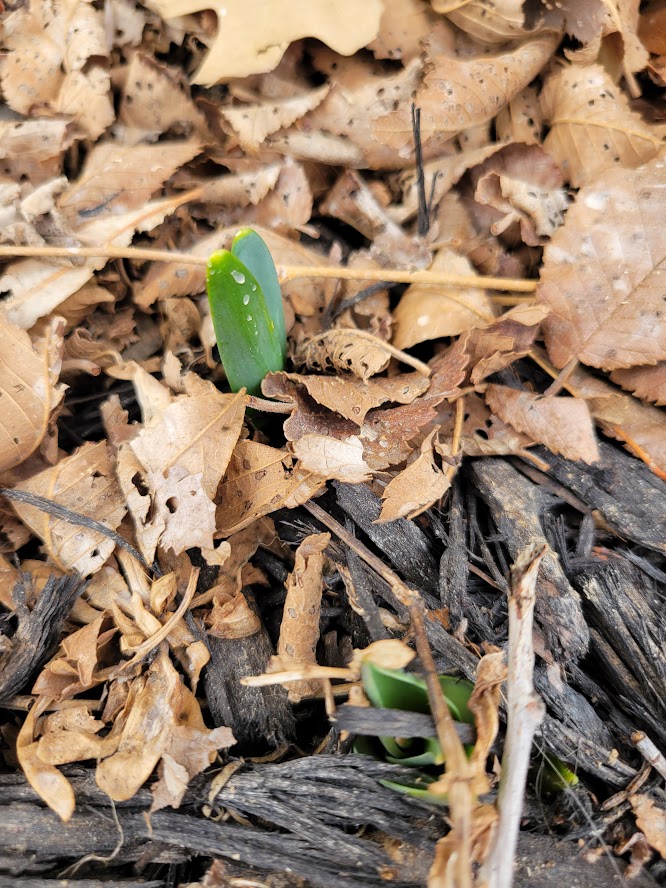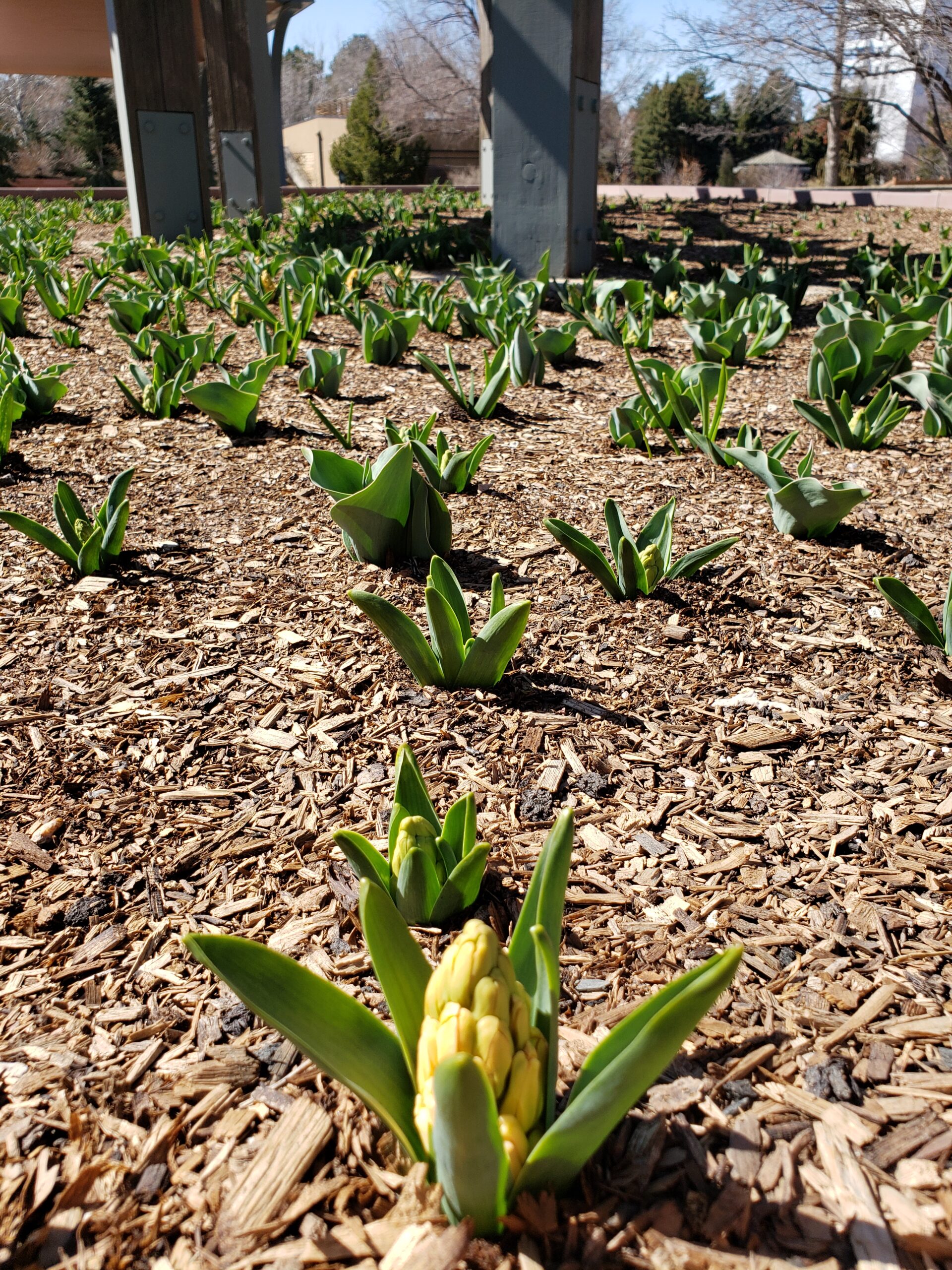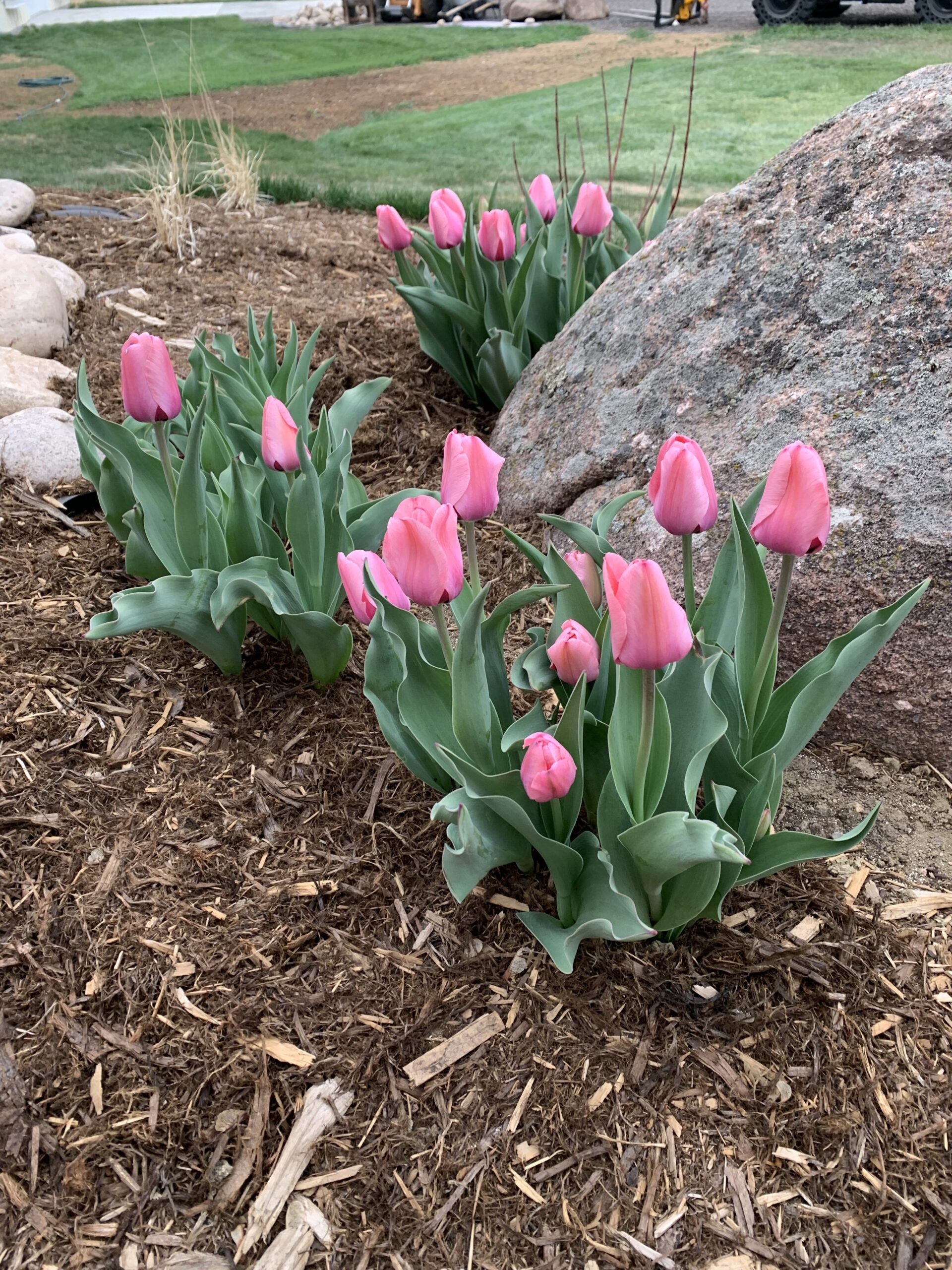


Foliage and flower buds of spring-blooming bulbs, such as daffodils, crocus and tulips, sometimes start to emerge early during periods of warm weather in late winter or early spring. A common concern among homeowners and landscapers is the fate of their bulbs during additional cold winter-like weather.
When cold weather returns, bulb growth naturally slows. Flower buds are at the greatest risk, and may be damaged if temperatures drop below 26°F. Foliage, though hardier than buds, can also be damaged. Bulbs planted near a foundation, especially on south or west sides, or on a south-facing slope, are most susceptible to early emergence and freeze injury.
To prevent early emergence, avoid planting bulbs against foundations or south-facing exposures. Existing plantings on susceptible sites should be mulched in the fall after the ground has frozen. Use a six-inch layer of organic material, such as straw or shredded leaves.
When cold weather threatens, cover emerging bulbs with a 2-inch layer of mulch or 1 ½ to 2 inches of sandy soil. If buds are showing color, consider cutting the flower stems to enjoy as cut flowers.
Once the bulbs have bloomed, leave the foliage on the plants for photosynthesis, food production and storage for next year’s blooms.
For more information, see the following Colorado State University Extension publication(s):



